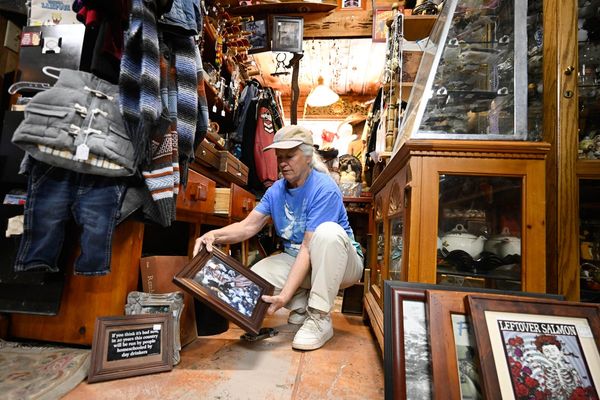
In the early months of 1800, while living in Lambeth, William Blake found himself at the bottom of a “deep pit of melancholy, melancholy without any reason for it”.
A change of environment was imperative. So when landed gentleman and patron of the arts William Hayley invited Blake to spend a few days on the Sussex coast, the poet, painter and printmaker agreed, hoping the sea breeze would raise his spirits and stimulate his imagination.
Blake and his wife, Catherine, rented a 17th-century cottage in Felpham, a small country village with a population of 500 inhabitants, where they lived for three years until 1803. It was here that Blake wrote his epic poem Milton, the preface to which was set to music and became the hymn Jerusalem, considered to be an alternative English national anthem.
“No other formed house can ever please me so well nor shall I ever be persuaded I believe that it can be improved either in beauty or use,” Blake once wrote of his residence.
But today, after decades of neglect, the cottage is in a state of disarray, with crumbling walls, a collapsing thatched roof and rotting rafters.
Ownership of the property was taken over by the Blake Cottage Trust in 2015, which is now trying to raise £4m to renovate the building and open it to the public for the first time, turning the cottage into a museum and literary place of pilgrimage.
Their aim is to do this by 2027, the 200th anniversary of Blake’s death.
The campaign has one international patron in the form of Bruce Dickinson – the frontman of Iron Maiden – while the artist Tacita Dean joined its growing list of ambassadors this week.
“It will be an honour and a privilege to help save and protect Blake’s Cottage,” Dean said, adding that Blake has been “a constant reference” for her since she first read his poem The Tyger as a child.
Doug Nicholls, the chair of the trust, said: “William Blake is one of our most influential cultural figures. His work – be it his poetry, his philosophy, his art or his printing – has so many touch points for so many different people. He’s got a way of stimulating young and old. He transforms people, he gets into people’s heads and hearts in a way that others don’t.
“Other great cultural figures have had their residences preserved as museums and places of inspiration. We have William Shakespeare’s birthplace in Stratford-upon-Avon and William Wordsworth’s Dove Cottage in the Lake District. Blake’s time at this cottage included some of the most seminal, inspirational and formative years in his career. It was here that he saw a descending angel of John Milton.” The figure was ‘clothed in black, severe & silent’, Blake said, descending to his garden through a staircase.
Nicholls said the trust wants to ensure “the place doesn’t fall down, that it’s conserved, preserved and transformed into a place of local, national and international inspiration – an education centre, a gallery, a museum. We even found the person who can reconstruct Blake’s printing machine. We want to get an arts programme going in the area and engage local volunteers. There’s massive enthusiasm for it.”
Among their plans is the creation of augmented reality rooms, galleries and digital access to all of Blake’s works.
So far, they have raised about £160,000 – helped in part by a grant of £55,000 from the World Monuments Fund Britain this summer. This enabled emergency work to stop the roof from collapsing. “But there’s still a way to go,” Nicholls said. “I’m being optimistic because we’ve got a very determined board and there’s growing support from the World Monuments Fund. But if all else fails, we’d lose one of the most important literary and artistic monuments in the country.”
Nicholls said Catherine was an important part of Blake’s artistic equation, helping him with the colouring of prints and pictures. The trust hopes to highlight her overlooked contribution to Blake’s work.
The couple are said to have been enamoured of their flintstone-walled garden, where they grew vegetables and flowers and allowed their kitten to prowl. According to legend, they were once discovered sunbathing naked in the garden, allegedly prompting Blake to say to the visitor: “Come in! It’s only Adam and Eve, you know.”







